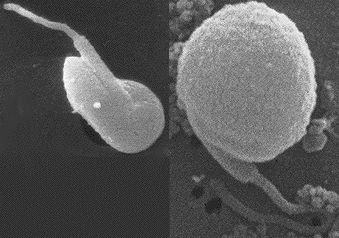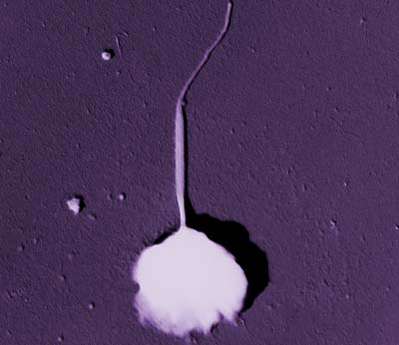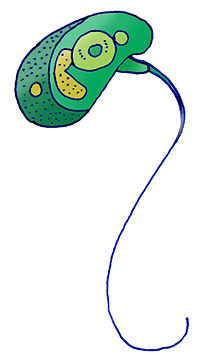Micromonas pusilla: Difference between revisions
| Line 41: | Line 41: | ||
==Ecology== | ==Ecology== | ||
Micromonas pusilla is an aquatic picophytoplankton and inhabits waters around the world. It is an important food sources for many organisms in aquatic environments. The most current research using 18S rRNA analysis suggests the existence of several clades specializing in different ecological niches within the species. No definitive conclusions have been reached on niche partioning | Micromonas pusilla is an aquatic picophytoplankton and inhabits waters around the world. It is an important food sources for many organisms in aquatic environments. The most current research using 18S rRNA analysis suggests the existence of several clades specializing in different ecological niches within the species. No definitive conclusions have yet been reached on niche partioning. The ecology of this microorganism has not been extensively studied and would be an interesting topic for further research. | ||
==Current Research== | ==Current Research== | ||
Revision as of 21:32, 20 April 2009
A Microbial Biorealm page on the genus Micromonas pusilla
Classification
Higher order taxa
Eukaryota; Chlorophyta; Prasinophyceae; Mamiellales; Mamiellaceae
Species
|
NCBI: Taxonomy |
Micromonas pusilla
 M. pusilla from The Swedish Meteorological and Hydrological Institute (http://www.smhi.se)
M. pusilla from The Swedish Meteorological and Hydrological Institute (http://www.smhi.se)
Description and significance
M. pusilla is an aquatic microorganism which is distributed worldwide. It is currently the only classified species within the genus Micromonas. The species contains at least three distinct clades: subtropical/tropical, temperate, and polar. M. pusilla is generally less than 2 µm in length and is therefore classified as a picophytoplanktonic species. It is pear-shaped with a single flagellum which has microtubules at the end. M. pusilla is one of the most abundant microorganisms within marine ecosystems and it is the smallest known single-celled eukaryotic organism.
 M. pusilla from the Encyclopedia of Life (http://www.eol.org)
M. pusilla from the Encyclopedia of Life (http://www.eol.org)
Genome structure
Research is currently being done on the genome of Micromonas pusilla, so there is not an abundance of knowledge on it. The genome is 15 Mb.
Cell structure and metabolism
Micromonas pusilla is a green algal species and gains energy through photosynthesis. It uses carbon fixation to produce organic molecules, which is driven by photosynthesis. The microorganism contains a nucleus, a chloroplast, and only one mitochondrion which produces adenosine triphosphate, or ATP, used for cellular energy. M. pusilla also contains a Golgi body which is an organelle used in the process of protein and lipid production and synthesis. M. pusilla's swimming and other movements are powered by a single flagellum.
 M. pusilla from http://www.wikipedia.org
M. pusilla from http://www.wikipedia.org
Ecology
Micromonas pusilla is an aquatic picophytoplankton and inhabits waters around the world. It is an important food sources for many organisms in aquatic environments. The most current research using 18S rRNA analysis suggests the existence of several clades specializing in different ecological niches within the species. No definitive conclusions have yet been reached on niche partioning. The ecology of this microorganism has not been extensively studied and would be an interesting topic for further research.
Current Research
References
Pirie, N.W. "On Being the Right Size". Annual Review of Microbiology. 1973. Volume 27. p. 119-132.
Edited by student of Jay-Terrence Lennon and Edward Walker at Michigan State University.
